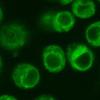Screening technologies
. 2022. “CRISPR screens in Drosophila cells identify Vsg as a Tc toxin receptor.” Nature, 610, 7931, Pp. 349-355.Abstract
DRSC/TRiP and DRSC-BTRR Office Hours
2021
Mar
23
2020
Sep
21
. 2019. “Pooled CRISPR Screens in Drosophila Cells.” Curr Protoc Mol Biol, 129, 1, Pp. e111.Abstract
Drosophila cell screen with DRSC reagent library contributes to identification of new therapeutic target for renal cancer
. 2019. “HIF-independent synthetic lethality between CDK4/6 inhibition and VHL loss across species.” Sci Signal, 12, 601.Abstract
Micropublication relevant to TRiP fly stocks
2018
Dec
08
2018
Jun
18
2018
Apr
13
. 12/9/2017. “Zinc Detoxification: A Functional Genomics and Transcriptomics Analysis in Drosophila melanogaster Cultured Cells.” G3 (Bethesda).Abstract




